When Josh Sundquist ’06 began giving motivational speeches at age 16, he didn’t consider his own story particularly interesting.
Diagnosed with Ewing’s sarcoma as a child, Sundquist lost his left leg to the disease when he was nine years old. Yet his early speeches didn’t focus on his battle with cancer or his experience as an amputee.
“Early on, it was just me lecturing people about how they should live, and the speeches were really awful, really didactic, arrogant and boring,” Sundquist said. “It was a horrible combination of factors. Gradually, I realized that the only time people were paying attention was when I was talking about how I lost my leg to cancer or answering questions about that. Over time, I realized I actually did have an interesting life story that people wanted to hear about.”
Sundquist’s story has become increasingly compelling since he began speaking at local schools as a teenager. A Paralympian, a member of the United States National Amputee Soccer Team, a bestselling author and a YouTube personality, Sundquist continues to speak to audiences nationwide.
Team USA
Shortly after losing his leg, Sundquist took up skiing and began racing in high school. As a senior, he moved to Colorado to train full-time before returning to Virginia, his home state, to attend the College of William and Mary.
Balancing his training with schoolwork proved difficult but manageable. Sundquist spent summers training at Mt. Hood, Ore. and was named to the United States Paralympic Ski Team in 2006 before competing in the IX Paralympic Games in Italy. He graduated from the College the following December.
Even while training in Colorado in the spring of 2006, Sundquist remained a full-time student at the College. He had a meal plan and a space in the lodge he shared with six friends. Sundquist also enrolled in four courses, all independent study, which he planned nearly a year in advance by coordinating with his professors and Sam Sadler ’64, the former Vice President of Student Affairs.
“Josh was, to say the least, unforgettable, in part for obvious reasons, but also because of his incredible perseverance, energy, character and sense of humor,” Chancellor Professor of Government Clay Clemens ’80, who worked with Sundquist, said in an email. “It was great having him in class and inspiring to follow his skiing exploits.”
Creative writing professor Emily Pease, who also taught Sundquist, remembers him as a funny, energetic student and gifted writer.
“At the time, my office was in the North Outhouse,” Pease said. “Sometimes I’d get to my office, and Josh would be waiting for me on the wall. He would’ve jumped up on that brick wall, and he’d just be perched there. And then he’d leap down on his one leg, grab his walking stick, and we’d go to the outhouse together. He left class after a few weeks to fly to Italy to compete in the [Paralympics], but he was able to keep up. … When he came back, he gave me a little souvenir pin from the Turin Olympics. I still wear it on one of my jackets.”
While a student at the College, Sundquist heard about amputee soccer. He was intrigued despite the fact that the sport was relatively disorganized in the U.S. Retiring from skiing after the Paralympics, Sundquist earned a spot on the U.S. National Amputee Soccer Team in 2014 and competed in the 2014 Amputee World Cup in Mexico. The team entered the tournament unranked but ultimately placed 12th.
“We scored some goals, won some matches, got out of the group stage and finished 12th, so I think a lot of people, including some of us on the team, were pleasantly surprised at how well we did,” Sundquist said. “Hopefully we can keep that momentum moving forward to future World Cups and international play.”
In celebrating his inclusion on the team, Sundquist took to social media last Halloween, posting a picture of himself in his costume: a foosball player. Sundquist, whom Business Insider describes as the “champion of all Halloween costumes,” has dressed in amputee-themed costumes for the past several years, appearing as the leg lamp from “A Christmas Story” and the one-legged Gingerbread Man from “Shrek.”
As the costumes suggest, Sundquist maintains a sense of humor regarding his disability. He went viral with his YouTube video “The Amputee Rap,” a glass-half-full anthem about life with one leg. Sundquist’s videos have been viewed more than 23 million times. At press time, he had 83,947 “likes” on Facebook, 31,000 followers on Twitter, and 17,800 followers on Instagram.
“We Should Hang Out Sometime”
Sundquist applies the same sense of humor in his writing. In his recent memoir, titled “We Should Hang Out Sometime,” Sundquist doesn’t focus on his athletic career but on various failed relationships, one of which took place at the College.
After weeks of Lodge 1 coffee dates with a girl he was interested in, Sundquist’s friends urged him to “define the relationship.” He asked her to go canoeing on Lake Matoaka, hoping to tell her how he felt, but ended up telling her before they arrived at the boathouse. She liked someone else. She asked Sundquist if he still wanted to go canoeing, although her friend had unexpectedly decided to join them.
Sundquist went anyway and paddled around in a separate canoe by himself, humiliated.
“It was so bad,” he said. “What was I thinking? Why did I still go on that boat ride?”
Despite the romantic setback, Sundquist looks back on his time at the College positively, especially his experience living in a lodge with some of his best friends. He remains appreciative of the administrators and professors with whom he built relationships while training for the Paralympics.
His time at the College also coincided with a turning point of sorts: Sundquist increasingly began using his crutches instead of walking with a prosthesis, for both practical and personal reasons.
“In high school, I was really nervous that people would find out I had one leg, while at William and Mary, I was much more interested in people knowing I had one leg,” he said. “So once they meet me, what they see is what they get. There’s no secret. … I’ve never thought about whether it was something about the people or environment there that helped me reach that point, but certainly you can’t separate the environment from the experience and the changes that I had there.”
Josh Sundquist ’06 lost his leg at age nine. Since then, Sundquist hasn’t lacked for accomplishments. COURTESY PHOTOS / joshsundquist.com

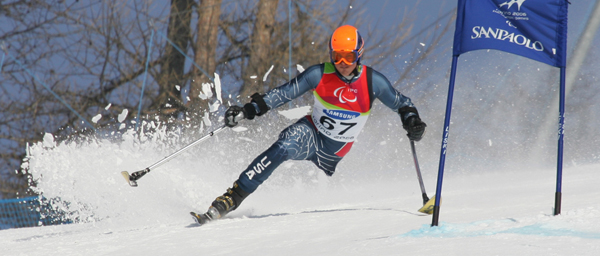
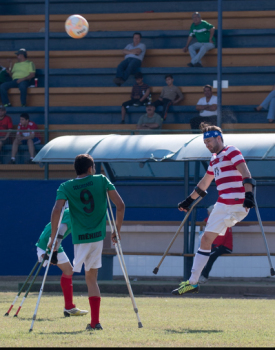
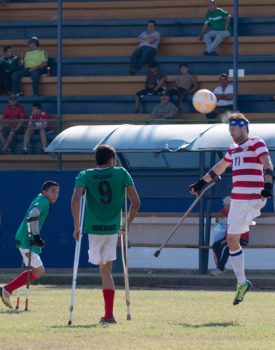
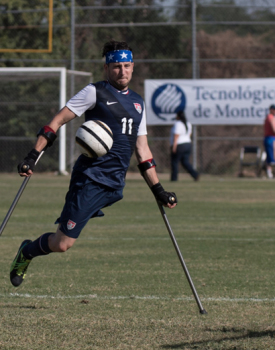
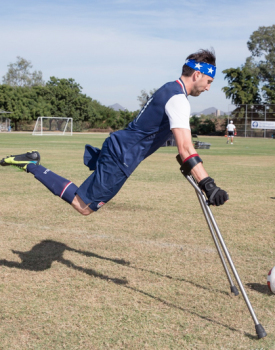
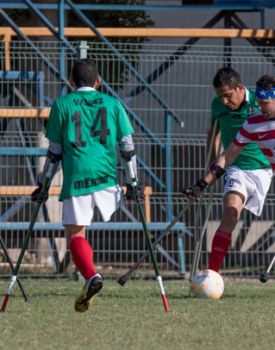
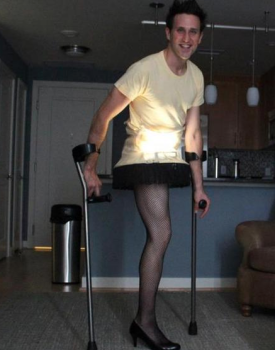
Terrific article.
THANKS.
Inspiring story, excellent reporting.